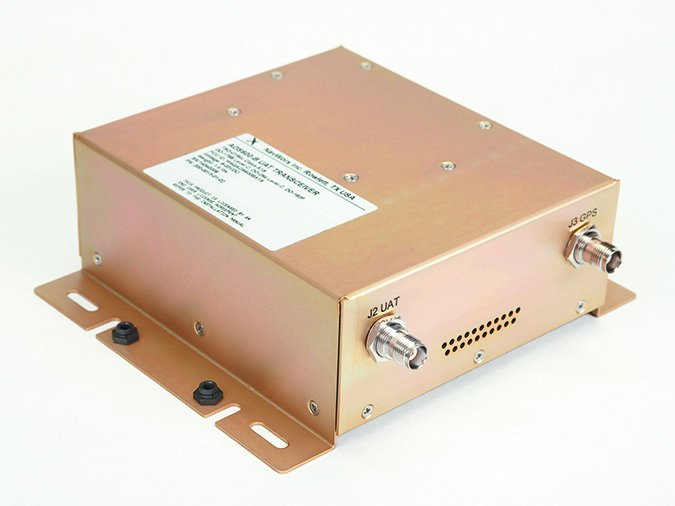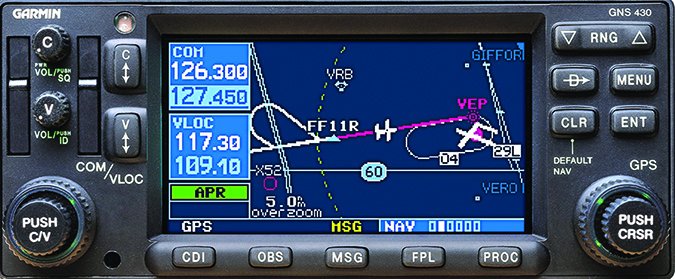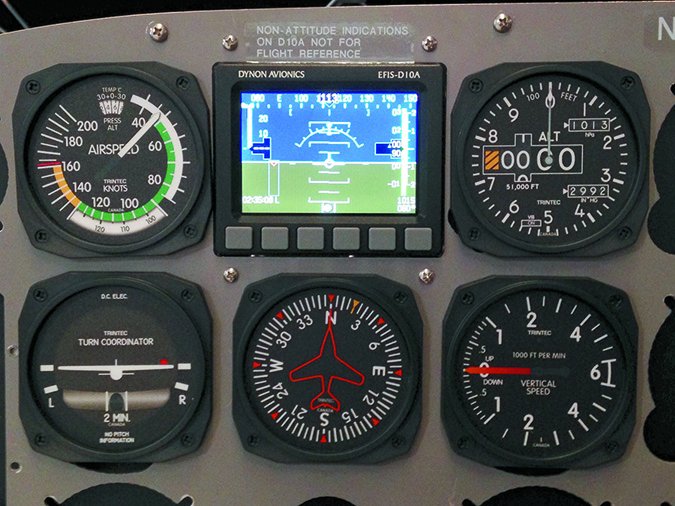While new avionics might not be flying off dealer shelves, we’ve noticed a sizable increase in market competition—particularly for ADS-B solutions and wireless panel-mounted avionics.
But those are minor developments, compared to the stunning announcement at the recent Sun n’ Fun fly-in this past April, which could lead to relief for buyers weary of budget-busting upgrades.
As we were preparing the following avionics satisfaction survey, the Experimental Aircraft Association (EAA)—in collaboration with Dynon Avionics—announced it won FAA approval to install an experimental EFIS display in a variety of certified aircraft. If that doesn’t start the long-awaited trend toward more affordable avionics, there may never be hope for the struggling market.

Survey Says
We pored over 214 responses from the survey posted on sister publication AVweb.com. Our usual survey caveats apply. We recognize that the sampling can be skewed because it might attract buyers who are disgruntled with a particular brand or interface because the selling dealer shop botched the installation. On the other hand, it’s an opportunity for happy buyers to tell us so and why. But what we’re really interested in are buying trends, perceived cost/value and whether buyers would make the same purchase decisions again.
The buyer demographics were predictable—46 percent were between the ages of 41 to 55, and 48 percent were over the age of 65. The rest were 21 to 40 years old. When it comes to flying missions (which is a major factor in upgrade decisions), 45 percent fly between 50 to 100 hours per year, and 32 percent fly between 100 and 200 hours per year. Personal/recreational flying counted for 50 percent, while personal and business flying was 47 percent. Certified single-engine aircraft ops are the most popular, at 77 percent, while only 11 percent of our respondents upgraded twin-engine aircraft.
We asked whether their avionics upgrade improved mission capability and respondents generally reported that it did, especially when it comes to ridding old equipment from the panel. Modern integration seems to be the key to saving space.
“It’s made it easier and helped to eliminate several pieces of equipment from the panel, including an old audio panel, separate intercom and an ADF,” said Dale Sanders of the new Garmin suite in his Cherokee Six.
When asked about the equipment’s value for the price (54 percent reported satisfactory value and 23 percent said the value was high for the cost), Sanders said he was very satisfied with the Garmin purchase, but would be very unlikely to purchase the equipment again. Like many others in the survey, investing big in an older airframe is the issue.
“Garmin makes excellent products, but its aircraft electronics are ridiculously expensive. It’s difficult to justify a $15,000 installation on a 40-plus-year-old aircraft,” he wrote. Sorry to rain on your already wet parade, Mr. Sanders, but shops we speak with say $15,000 is considered an entry-level retrofit.
“I put a lot of money into the avionics—close to the value of the airframe with its high-time engine—and I’m not sure that made economic sense. I understand the reluctance owners are feeling,” said Garmin equipment owner Reece Pollack, who is very satisfied with the purchase.

The staggering price of an upgrade has some buyers like Randall Dean eyeballing the used market. “I held out for most of the items I wanted to show up on eBay and was able to purchase a nearly new Garmin GTN750 with 23 months of warranty remaining, along with the Aspen MFD1000, Garmin GDL69A XM unit, WX500 Stormscope and even an S-TEC 55X autopilot,” he wrote. He had to purchase a new GDL88 ADS-B system and Aspen PFD1000. “Doing this saved me many thousands of dollars on a totally modern avionics suite,” he said of the $40,000 project for his twin. We should stress that warranty support for the used equipment is critical. You don’t want to buy these major systems without a warranty in place. Repair support is expensive.
When it comes to manufacturer support, only 50 percent said it was very good and 28 percent said it was satisfactory. Some of that might reflect buyer views on cross-brand compatibility. If you’re mixing avionics brands, you might run into a troubleshooting roadblock.
“Flight planning apps and ADS-B manufacturers are very proprietary and that hurts GA,” said one owner. “The avionics companies simply refuse to cooperate with each other,” added another. Reader Jeffrey Aryan threw it all on the FAA.
“The FAA should mandate that all brands are compatible with each other, since the FAA is the approving agency. Plus, the FAA must mandate that all avionics are serviceable for at least 35 years,” he told us. Good points, but be careful what you wish for. Good regulation can have a negative consequence on price. Still, it’s not all doom and gloom.
We have noticed a growing trend that points to more open interfaces, especially in the ADS-B market. While it took some heat early on, Garmin has opened its Flight Stream wireless data stream to ForeFlight’s Mobile tablet app, plus it added GPS navigator compatibility with the NavWorx ADS600-B system. This creates an easy solution for lots of existing GNS430W/530W owners and could put a mandate-approved solution in their hands for as low as $3000. Remember, it wasn’t long ago that such a solution easily topped $5000.
Garmin has even decided to play nicely with Aspen, recently announcing the compatibility of its GDL88 ADS-B system and new GTX345 transponder with Aspen’s Evolution flight displays.
Rising Competition

It’s no surprise Garmin remains the dominant brand (60 percent), but Avidyne—once written off as dead by its critics—has come back impressively strong with several new interfaces. A handful were just introduced at Sun n’ Fun this past April. This includes synthetic vision for its IFD-series navigators, a new wireless interface with the IFD100 iPad app and some rejiggering of its ADS-B products. It has even ramped up its sales support team as a result of increased demand. Better yet, brand satisfaction was generally favorable in our polling.
“The Avidyne 540/440 navigator is a truly transformational improvement over other current market offerings. It reduces pilot workload while providing tremendous situational awareness,” said Lawrence Paratz of the new Avidyne stack in his twin. He wasn’t the only buyer who recognized Avidyne’s response to early user feedback, incorporating many improvements in free firmware upgrades. But others are frustrated with problems that seem to be the result of their shop’s learning curve.
“My plane has spent about 99 percent of the last three years in the avionics shop trying to get the new Avidyne stack to work correctly. I ended up bringing it elsewhere (good plan). Some of the problems were due to the lack of familiarity with Avidyne equipment at the original avionics shop, but a lot of it was Avidyne hardware and software problems,” said one owner.
As for operational complexity, 58 percent said the transition was very easy, while 33 percent told us it was somewhat challenging. Of those, 52 percent taught themselves how to use the stuff, while 34 percent used training material offered by the manufacturer.
In the age of tablet computers, it’s too easy for users to compare panel avionics with the iPad. “Finding things in the Aspen Evolution PFD system was harder than accessing data on the iPad. Plus, it seems that my iPad is more advanced for certain functions,” said one VFR pilot of his Aspen/FreeFlight ADS-B combination.
Garmin got some attaboys for helping tame the learning curve. “The Garmin folks (and the training staff in particular) were fabulous when it came to helping me understand the capabilities of the new avionics installed,” said one owner. We can vouch for the quality of Garmin’s factory pilot training. We took the GTN/G600 course a couple of years ago (we reported on the experience in our December 2013 issue) and felt that it was thorough, if not fast-paced.
It Costs How Much?
We asked about total cost and downtime. Don’t expect a short stay at the shop for a major job.
“It took three weeks to install a Garmin GTN650, GNC255 navcomm, GTX327 transponder, a GDL88/Flight Stream ADS-B system and an Aspen EFD1000 Pro PFD. The cost was $42,000, which included hardware to provide digital steering to the existing Century 2000 autopilot,” reported Stu Landrum.
Basic ADS-B installs might tie the aircraft up for only a couple of days. “It took roughly $4000 and three days to install my Garmin GDL88 and Flight Stream 210 system,” said J.B. Pavela, who also reported that the FIS-B weather capability has helped his tactical enroute decisions.
The easiest upgrade could be Avidyne’s IFD navigator when replacing an old Garmin GNS navigator. Several owners said it really is a while-you-wait deal. Others who needed to replace a GPS antenna (in existing non-WAAS IFD upgrades) said it took roughly 12 hours total, which is around $1500.
Fast-Moving ADS-B
If you’ve been keeping up with our biannual ADS-B buyer’s guide, you know there is no shortage of ADS-B solutions. Based on our survey, the procrastination continues. With less than four years to go until the equipage mandate kicks in, only 27 percent of respondents invested in mandate-compliant ADS-B Out installs. A whopping 71 percent fly with ADS-B In, which includes portable receivers. Of the respondents who haven’t made the investment, 80 percent said they plan to upgrade, while only 8 percent said they won’t upgrade at all.

A brisk and highly competitive ADS-B market is causing some heartburn. “ADS-B is the biggest racket that the FAA has ever perpetrated on the GA community,” said one reader who is sore after his shop installed a Garmin GTX330ES ADS-B transponder in his airplane one week prior to Garmin rolling out its next-gen line of all-in-one transponder/ADS-B solutions. A shop we talked to said Garmin back-ordered the older product in hopes of minimizing the problem, but shops do stock older inventory.
Is the lack of cross-brand compatibility hindering ADS-B sales? One reader made an interesting point. “Until avionics companies are committed to interoperability and multi-vendor setups are tested and approved—including installation techniques—I fear many more people will simply wait until the last possible moment to equip,” he wrote.
When it comes to ADS-B brand popularity, Garmin blows away the competition. In the survey, 62 percent bought a Garmin solution. That’s not surprising, given the company’s diverse ADS-B product line. But we found several pleased buyers from the FreeFlight camp, but others were not so pleased with dealer support for LSA models, including owner Serena Ryan.
“Installation of the FreeFlight Rangr ADS-B was a breeze. I love that I can have traffic and weather on my iPad using ForeFlight. I tried talking the avionics shop into putting the traffic on my Garmin 496 portable GPS. They wouldn’t do it as it wasn’t a ‘documented’ solution. It’s an LSA and all it needed was manufacturer approval—which was available. I’m tired of aviation professionals not knowing about the LSA world,” we were told.
Winds of Change?
We aren’t letting our guard down, but we suspect the market is at least pointed in the right direction. Non-certified avionics for Part 23 aircraft, evolving cross-brand compatibility and cheaper ADS-B solutions were some of the demands noted in our survey and it seems like manufacturers may finally be listening.
EAA’S JAW-DROPPER: DYNON STC FOR CESSNA, PIPER

How ironic that one of the biggest news stories in modern GA history was delivered in a press conference that was barely half full. For the record books, it was day two of Sun n’ Fun 2016 where Experimental Aircraft Association (EAA) Chairman Jack Pelton told journalists that the organization, along with Dynon Avionics, has earned an AML-STC to install—as a primary standalone system—the Dynon experimental EFIS-D10A in Part 23 certified aircraft. While some may find this to be a modest first step (the AML is limited to Cessna 150s, 152s, 172s, Piper PA-28 and -38 series airplanes), it’s a giant step toward finally bringing more affordable—and more advanced—avionics to existing Part 23 aircraft. While the STC is limited to the EFIS-D10A system, Pelton assured the audience there will be more approvals to come. This, we assume, means an expanded product line, plus opportunities for other established manufacturers to get in on the bliss. Yes, that includes a real opportunity for Garmin—a company that has spent the last few years ramping up its experimental avionics product line. Its G3X Touch has been so well-received that it has cut into Dynon’s share of the experimental market—especially at the OEM level.
On the other hand, we can’t help but wonder what this breakthrough means for the future of existing certified avionics. Will it send potential buyers running to the sidelines waiting for more STCs, rather than dropping serious bucks on existing certified stuff? Or will the threat of a new era of low-cost experimental products slash prices to a more palatable level?
Perhaps for the foreseeble future, it might not have much effect on the market’s higher end. Instead, it could pump some sugar into the market’s lower end. You know, the exact market for which Dynon’s STC applies. These are modest airplanes, including ones you’ll find on training flight lines and in desperate need of radio upgrades.
As for the 4-inch Dynon EFIS-D10A PFD, the MEMS rate sensor-equipped instrument associated with the STC is a version of the company’s well-proven D10A standalone EFIS. It has been in Dynon’s product lineup for 10 years. It differs slightly from the previous version in that it can’t be used in an autopilot interface. It can be interfaced with the Dynon remote magnetometer for gyro-stabilized magnetic heading, and with an AoA probe for onscreen angle-of-attack data. The STC requires connections with the aircraft pitot and static system, with an external GPS antenna, plus the instrument has to replace the existing attitude gyro, but must not replace any other primary flight instrument.
As we go to press, exact pricing hasn’t been set, but is expected to be around $2000 and will be available in a couple of months. Visit www.dynonavionics.com.


